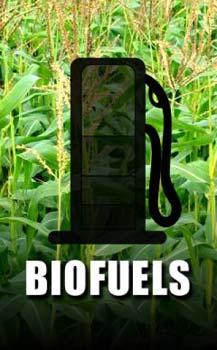Source: Xinhua
02-11-2009 11:21
Special Report: Tech MaxWASHINGTON, Feb. 10 (Xinhua) -- Plant and forestry waste and dedicated energy crops could sustainably replace nearly a third of gasoline use by the year 2030, according to an in-depth study by the U.S. Sandia National Laboratories and General Motors Corp., which is available here on Tuesday.
 |
| Plant and forestry waste and dedicated energy crops could sustainably replace nearly a third of gasoline use by the year 2030.(File photo) |
The goal of the "90-Billion Gallon Biofuel Deployment Study" was to assess whether and how a large volume of cellulosic biofuel could be sustainably produced, assuming technical and scientific progress continues at expected rates. The study was conducted over a period of nine months.
Researchers assessed the feasibility, implications, limitations, and enablers of annually producing 90 billion gallons of ethanol --sufficient to replace more than 60 billion of the estimated 180 billion gallons of gasoline expected to be used annually by 2030. Ninety billion gallons a year exceeds the U.S. Department of Energy's goal for ethanol production established in 2006.
The study assumes 75 billion gallons would be ethanol made from nonfood cellulosic feedstocks and 15 billion gallons from corn-based ethanol. The study examined four sources of biofuels: agricultural residue, such as corn stover and wheat straw; forest residue; dedicated energy crops, including switchgrass; and short rotation woody crops, such as willow and poplar trees. It examines the costs of producing, harvesting, storing and transporting these sources to newly built biorefineries.
Using a newly developed tool known as the Biofuels Deployment Model, or BDM, Sandia researchers determined that 21 billion gallons of cellulosic ethanol could be produced per year by 2022 without displacing current crops. The Renewable Fuels Standard, part of the 2007 Energy Independence and Security Act, calls for ramping up biofuels production to 36 billion gallons a year by 2022.
The study, which focused only on starch-based and cellulosic ethanol, found that an increase to 90 billion gallons of ethanol could be sustainably achieved by 2030 within real-world economic and environmental parameters.
The study concludes that 90 billion gallons per year of biomass-derived ethanol can be produced and distributed with enduring government commitment and continued technological progress.
Continued support of R&D and initial commercialization is critical because sustained technological progress and commercial validation is a prerequisite to affordably producing the large volumes of ethanol considered in this study.
Policy incentives such as a federal cap and trade program, carbon taxes, excise tax credits and loan guarantees for cellulosic biofuels are important to mitigate the risk of oil market volatility. The domestic investment for biofuels production is projected to be virtually the same as the investment required to sustain long-term domestic petroleum production.
Sandia's analysis also included land use, water availability, energy used to produce cellulosic biomass, transportation of feedstocks and other potential leverage points for the development and use of cellulosic biofuels.
-- Click for more news in Tech Max >>
Editor:Yang Jie
